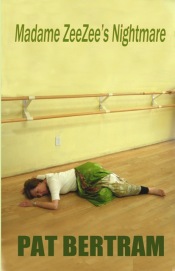Sherilyn Winrose, author of Safe Harbor published by Second Wind Publishing, talks about setting the scene:
I find when I’m writing it is like a movie playing in my head and I tend to get wrapped up in the action, dialog and characters, forgetting to paint the scene. So I find myself going back to add visuals later. Often times more than once. Doing sweeps for clothes, decor and so on.
What are my character’s wearing? Do I have the correct styles, fabrics for the period? Do I know the names of the fabrics, styles I’m using? Sometimes I don’t and have to looking for them or have long chunky sentences.
Whether it’s a Regency or a Contemporary setting knowing what you are talking about takes a bit of research.
What a character wears says as much about her as the way she interacts with other characters. Clothes can give subtle hints to things yet to be revealed, or negate the need to explain she’s modest or eccentric or at the top of fashion.
Where do our character’s live? An Arts and Crafts/Californian bungalow or a Victorian style house. Do you know the different Victorian architecture styles? As the author it’s your job to be precise in your settings.
Queen Anne is a specific Victorian type not a generic term for the era. Queen Ann is my personal favorite.
Are your characters Frank Lloyd Wright, free from clutter, streamlined? Or are they stuck in the eighties with dripping oil lamps and enormous water bed furniture? Or somewhere in between with Gustov Stickley’s clean lines which lend themselves to a homey feeling consistent with the Arts and Craft movement?
As I see it; there should be nothing in a novel which doesn’t serve the purpose of the story. Whether it’s a chintz tea set, Mission style furniture, the color of the walls, carpet or lack there of.
While they might seem inconsequential, what you dress your story with adds layers to characters and the mood of the story. Can you imagine Dracula living in a 70’s split-level? How about Queen Victoria in a sod house?
Knowing what you are talking about can make the descriptive short and unobtrusive. Unless you are in Queen Elizabeth I court it shouldn’t take paragraphs or a page to set the scene or describe a gown.
When I find that I’ve done just that, a lot of it hits the cutting room floor in edits.
So does window dressing happen as you write your first draft?
Do you write in layers, going back to add color to the script?
Is any of the background conscience thought or does it just happen/dictated by the characters themselves?
Do you use back drops and accents as a means to propel the story, or just as fill?








